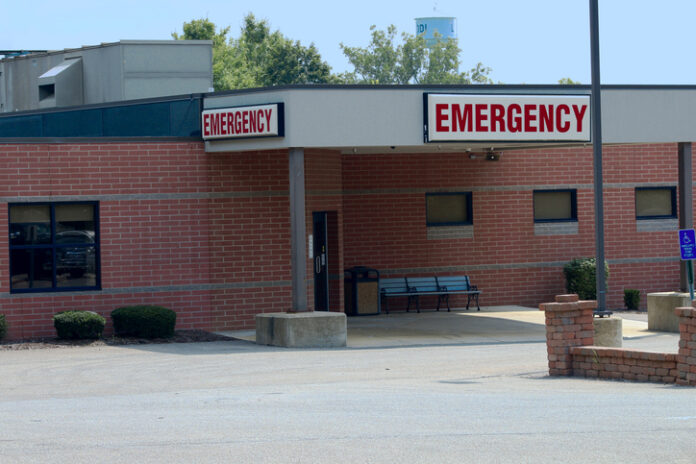Hospital consolidation, often seen as a financial lifeline for rural hospitals and encouraged by the Affordable Care Act, may result in cutbacks in services and reduced patient access, a new study concludes.
More than 100 rural hospitals in the United States have closed since 2010, and another 430 are at risk of closing, according to data compiled by the University of North Carolina and released in September of 2019. Hospital managers attempting to avoid that fate have increasingly affiliated with larger health care systems to improve their financial performance. The rise of consolidations has created larger regional and national hospital systems while reducing competition among providers.
In a study supported by the RAND Center on Excellence on Health System Performance and published in Health Affairs in December 2019, researchers Claire O’Hanlon, Ashley Kranz, and Maria DeYoreo examined the effects of affiliation on rural hospitals and their patients.
The study, “Access, Quality, and Financial Performance of Rural Hospitals Following Health System Affiliation,” compared rural hospitals that affiliated with a health system in the period 2008-17 with those that did not affiliate. The study analyzed structure, utilization, quality, and financial performance.
Service Reductions
Researchers found rural hospitals that affiliated with larger hospital systems underwent a significant reduction in services such as diagnostic imaging, obstetric and primary care, and outpatient non-emergency visits. Analyzing how the changes affect patient access is “an important next step,” O’Hanlon told Reuters Health in a December 5, 2019 article.
Meanwhile, operating margins increased by 1.6 to 3.6 percentage points, the researchers found, raising the question of whether the financial performance is related to decreased operating costs. O’Hanlon discussed the study during a webcast on rural health care and said the change in operating margins is a new finding.
“This is in conflict with a previous study that looked at the effect of affiliation on rural hospitals,” O’Hanlon said. “That study found there was a decrease [in operating margins], not an increase. We used a different control than they did.”
On quality measures, “changes in patient experience scores, readmissions, and emergency department visits were similar for affiliating and non-affiliating hospitals,” the RAND study states. “While joining health systems may improve rural hospitals’ financial performance, affiliation may reduce patients’ access to services in rural areas.”
In the webcast, O’Hanlon says it is difficult to measure quality in rural areas because of the limited scale and data-recording differences. “Even if affiliation prevents rural closure, and we don’t know whether or not it does, it may not be preserving access to rural services in rural communities,” O’Hanlon said.
Obamacare Effect Cited
The growth of hospital consolidation is directly tied to Obamacare, says Sally Pipes, president of the Pacific Research Institute.
In a September 2019 Forbes article, Pipes said the architects of the Affordable Care Act saw hospital consolidation as a way to streamline care, improve the quality of medical services, and generate savings for patients.
“Obamacare encouraged consolidation by incentivizing providers to coordinate care and adjust Medicare services to make mergers a smarter financial option,” Pipes wrote.
Hospitals responded to Obamacare’s incentives, with the number of consolidations rising from 93 in 2011 to 115 in 2017 but the savings to patients never materialized, Pipes states.
“Consolidation, by design, reduces competition,” Pipes wrote. “ So, it should be no surprise that the new corporate behemoths have raised prices.”
Previous Study Supported
The new report lends support to a similar study examining rural health care delivery conducted by researchers at the University of Washington and published in August 2019 by the National Bureau of Economic Research (NBER).
“Rural closings increase travel times for patients, and lead to outmigration of health care professionals post-closure, severely dismembering patient access to care and exacerbating social disparities in health outcomes,” the NBER study reported.
Rising Criticism
The decline in the number of rural hospitals coincides with the growing concentration of hospitals in metropolitan areas.
A recent report by the Health Care Cost Institute (HCCI) found places where hospital markets have become more concentrated also had larger increases in inpatient prices, and vice versa. The correlation held up only in areas with hospital merger and acquisition activity.
Not unlike the RAND findings, the HCCI study found consolidation leads to less competition, higher prices, and fewer choices for care. The American Hospital Association disputes the HCCI’s findings, saying the group failed to consider consolidation among insurance companies.
Boosting Market Power
The findings in the Rand study come as no surprise to Devon Herrick, a health economist and policy advisor to The Heartland Institute, which publishes Health Care News.
“Hospitals seeking to merge with competitors claim their goal is cost savings from economies of scale,” Herrick said. “However, it is more likely the primary goal is boosting market power in order to extract higher prices from patients, employers, and insurers.”





















